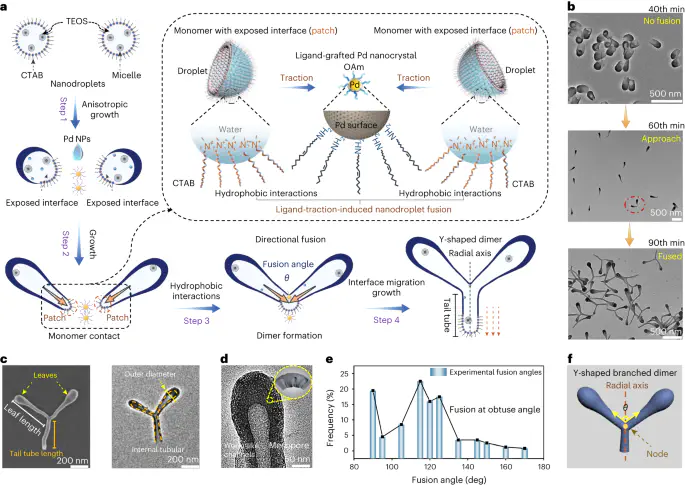
摘要
Wedderburn–Etherington number patterns, which have inherent combinatorial rules, are ubiquitous in natural tree-like systems and are of significance for studying the assembly of single particles into branched superstructures. However, implementing these patterns at the microor nanoscale is still challenging. By controlling the sequential fusion of nanodroplets, these patterns can be reproduced in nanometre-sized branched mesoporous silica structures. Anisotropic mesoporous silica nanoparticles, possessing exposed reaction-active droplet surfaces, are initially synthesized and then assembled following WedderburnEtherington number patterns (1, 1, 1, 2, 3, 6, 11, and so on), forming branched nanotrees containing dimers to multimers. This assembly is achieved by using ligand-grafted palladium nanocrystals as an adhesive, which can fuse the droplets exposed on one side of the preformed nanoparticles. The formed dimers have a Y-shaped architecture with two fused branches (length, ∼395 nm; outer diameter, ∼157 nm) connected by an open tube that grows later, and the sequential fusion-growth style can further extend the Y-structure to multibranched structures. Statistics can predict the degree of branching at each assembly level. The types and configurations of branched structural isomers can also be calculated precisely and are specified by the Wedderburn–Etherington trees.